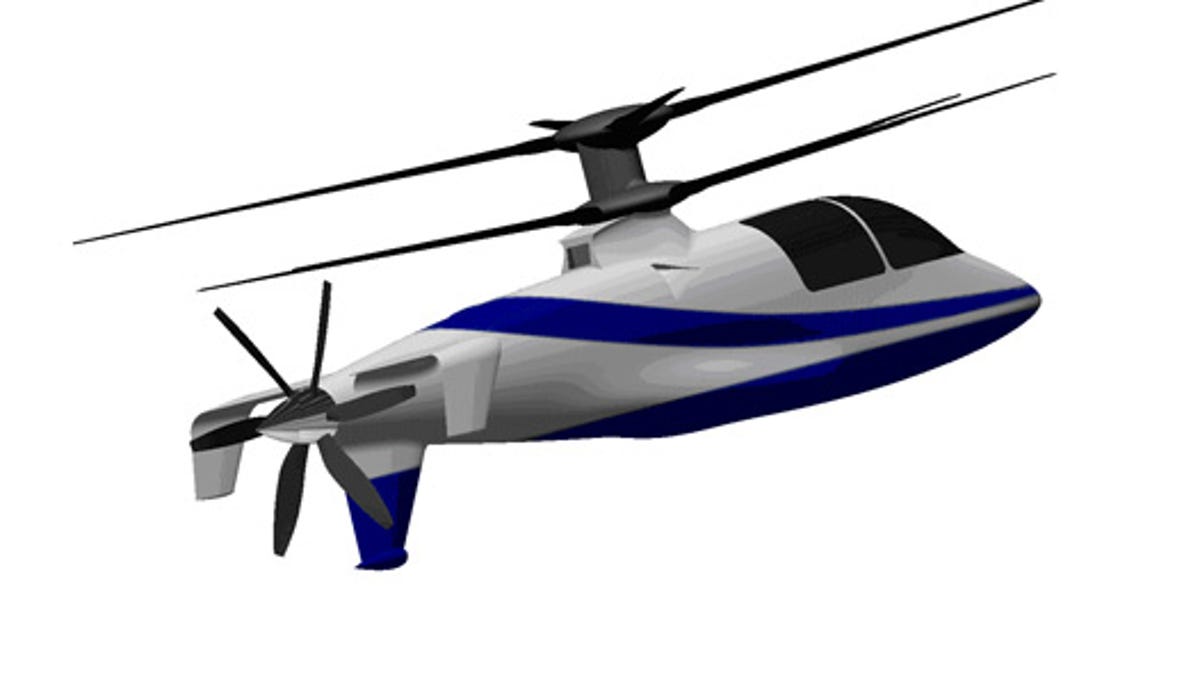Sikorsky's helicopter of the future
X2 technology could let a helicopter "cruise comfortably" at 250 knots, much faster than current production models, the company says. But when will it actually fly?

How fast can a helicopter go? If Sikorsky Aircraft's plans work out, the answer could be: a lot faster than is possible right now.
For several years, Sikorsky has been working on what it calls X2 technology, a suite of systems that it says could let a helicopter "cruise comfortably" at 250 knots. That would be a far zippier pace than most current rotary wing aircraft can handle. The UH-60L variant of Sikorsky's Blackhawk, for instance, can fly at about 150 knots.
The tilt-wing MV-22 Osprey, meanwhile, can hit speeds upward of 240 knots, but it's a hybrid--half helicopter and half airplane. It can hover when its propellers are turned upward, but to go fast, it needs to fly like a plane. Sikorsky clearly has the controversial Osprey in its sights. The small chart here from Sikorsky suggests how an X2 aircraft could match the Osprey for speed while beating it at feats such as hovering. (The plane at lower right in the chart represents vertical-take-off jets like the Harrier.)
On Sunday, Sikorsky showed off its X2 Technology Demonstrator suite at Heli-Expo 2008 in Houston. A first test flight, however, remains some unspecified distance off in the future, with the research project having spent 2007 in build and subsystem test phase.
The most striking thing about the X2 design is that it makes use of coaxial main rotors, in contrast with the single main rotor that's been characteristic of mainstream helicopters since--well, since Igor Sikorsky himself helped popularize that arrangement in the 1940s. The coaxial rotor system has largely been the lonely province of helicopter makers like Russia's Kamov. (Tandem-rotor designs like the Chinook, meanwhile, have two large rotors fore and aft.)
The other notable aspect of the X2 is the rear-facing tail rotor. Helicopters like the Blackhawk with a single main rotor invariably have a tail rotor that faces the side, a necessity to counter the torque from the main rotor that would otherwise spin the fuselage like a top. The X2's coaxial setup would eliminate the torque, allowing the tail rotor to propel the helicopter forward much like the propeller on a ship.
Internally, an X2-based aircraft would have fly-by-wire (that is, electronic) flight controls, as opposed to traditional mechanical or hydraulic controls. Sikorsky says the eventual aircraft would serve as a "flying wind tunnel" to measure the performance of the rigid main rotors and their relationship to the rest of the aircraft's aerodynamics. No, nobody said that being a test pilot is easy.
At the Heli-Expo, a Sikorsky VP told Aviation Week that the company was gathering feedback from industry reps to help determine the initial commercial X2 product.

